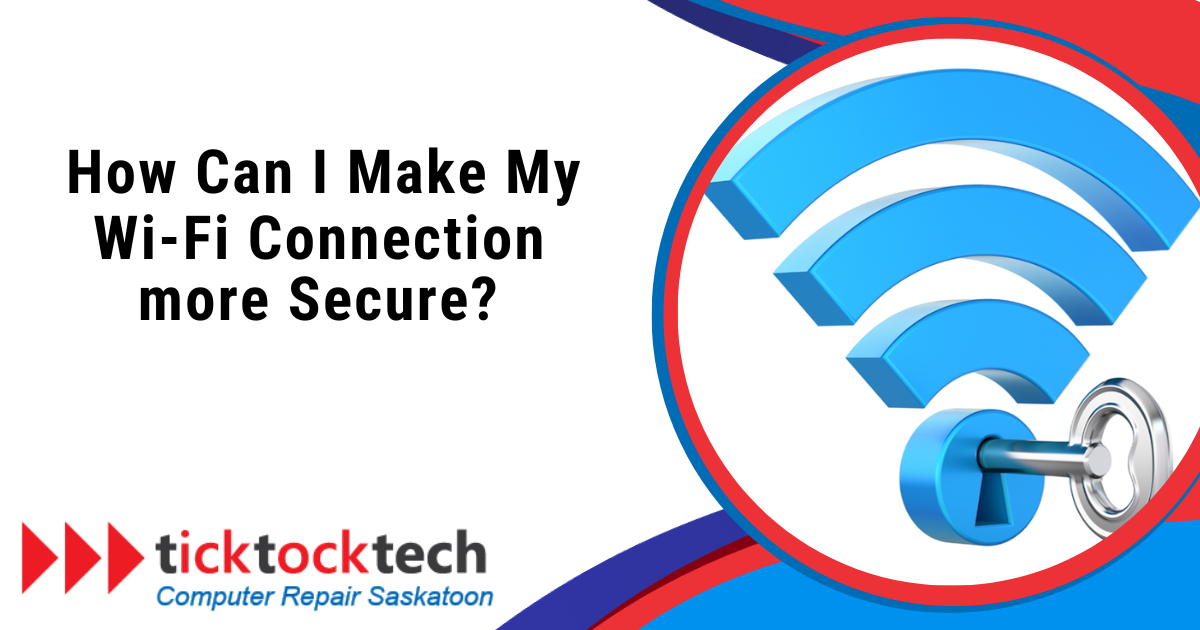There are several devices in our homes, workplaces, or business centers that are connected to Wi-Fi networks. Among them are laptops, streaming devices, security cameras, smart speakers, and phones, it’s possible to have a dozen or more devices connected to your network at any time. Wireless networks are frequently targeted by hackers and without adequate security measures, your data may be at risk. They might be able to spy on those emails you send to your doctor. They might even flood your devices with malware and spyware.
Now, imagine the loads of information on those devices like credit card numbers, bank records, login details, live camera feeds, etc., and how accessible such information will be if someone gains access to your Wi-Fi network. Whether you use Wi-Fi at home or the workplace, its security must be guaranteed. Your personal and sensitive information must be protected from potential cyber threats in the digital era by using a secure Wi-Fi connection. Additionally, it will prevent unwanted or unauthorized users from accessing your connection or freeloading on the internet service you have paid for.
A secure Wi-Fi network connection can be set up and maintained with relative ease. We’ll look at several techniques and recommended practices in this post to help you strengthen the security of your Wi-Fi connection. Some are better than others at fending off hackers and freeloaders, but each is helpful in their particular way. Although nothing will completely protect you from intrusion or hacking efforts, following these tips will make it more difficult for someone to compromise your network and data.
1. Change the default router login credentials
Customize your Wi-Fi network login credentials to prevent unauthorized access. Regularly, you can change the username and password because there is no rule regarding how often you change the router password. Avoid using easily guessable information like “admin” or “password” as your credentials. Be warned that any devices currently connected to your Wi-Fi network will be kicked off after the name change, including smartphones, computers, game systems, smart home devices, etc. You’ll have to update and reconnect all of those devices when you rename the network.
2. Set a strong Wi-Fi password
Always use unique and complex passwords for your Wi-Fi network. Use special characters, lowercase and uppercase letters, and numbers for maximum security. Never use easily guessable passwords or reuse passwords you’ve already used. You can use a password manager, they help you keep track of your passwords, and some even generate random passwords that are hard for both humans and computers to crack.
3. Change the network name (SSID)
Never let hackers find information about you just from your Wi-Fi network name. Create a unique and inconspicuous SSID that doesn’t reveal any personal information. Whenever you set up a connection with a password, ensure that the network is hidden from view. Hiding your network will help you to block visitors from getting on the network.
4. Update router firmware
Router manufacturers update the firmware on routers whenever a vulnerability is detected, just like the operating system on your phone or PC. Regularly check for updates and apply them to keep your router’s firmware up to date. Most modern routers have an option to check for updates automatically, so make sure this feature is enabled.
5. Enable network encryption
Use robust and reliable encryption protocols, such as WPA2 or WPA3. Encryption ciphers your data transmitted over the network, making it more difficult for attackers to access and exploit it. This will prevent anyone from eavesdropping on your Wi-Fi network without logging into your Wi-Fi network. The latest encryption standard for Wi-Fi is WPA3 (Wi-Fi Protected Access 3), which offers stronger security compared to its predecessors, WPA2 and WEP. Make sure your router supports WPA3 and enable it in the router settings.

6. Disable remote management
Many routers offer the option to manage the router settings remotely through the internet. While this can be convenient, it can also be a security risk if not properly configured. To enhance security, disable remote management and only access your router’s settings from within your local network.
7. Enable multiple network firewalls
A firewall acts as a shield in the process of separating your device from the Internet. Some openings called ports may communicate with your device. At this point, the firewall arrests those ports and prevents your device from hackers. It filters incoming and outgoing traffic and prevents unauthorized access and suspicious connections. Consider using a firewall in conjunction with other security measures like antivirus software and identity theft protection.
8. Use MAC address filtering
This feature lets you control who can access your Wi-Fi network based on their unique MAC address. Every connected device has a MAC address, and the identifier of the network card is unique. You can also access this through advanced network filters. In addition to using long, complex passwords on network devices like routers and repeaters, you can exclude other computers from connecting to yours.
7. Create a guest network
Creating a separate guest network for visitors or devices that don’t require access to the main network is a good practice to help prevent unauthorized individuals from accessing private data. The guest networking option allows you to set up a separate Wi-Fi network that provides internet access but hides any shared folders, printers, storage devices, and network devices connected to your primary wireless network.
8. Disable SSID broadcasting and UPnP (Universal Plug and Play)
Even though it is a convenient feature, it’s best to restrict access to your network with no manual configuration. Also, make your Wi-Fi network invisible by disabling its SSID. This will add an extra layer of security to your network.
9. Update your devices and software
Strengthen your network security by regularly updating your device software and firmware. The latest versions usually contain security patches, bug fixes, and increased security against cyber threats. Frequently check the list of devices connected to your Wi-Fi network through your router’s settings. Ensure that you recognize all the connected devices. If you spot any unfamiliar devices, investigate immediately. An unknown device on your network could be a sign of unauthorized access
10. Use a VPN
A VPN is commonly known as a Virtual Private Network (VPN). They provide primary security benefits that protect your router from interloping. A VPN service should be the cornerstone of your cybersecurity routine. It encrypts your online traffic, adding an extra layer of security when accessing the internet. It is a must-have if you often use public Wi-Fi networks, but it’s also a smart way to add an extra layer of security to your home Wi-Fi. Consider using a reputable VPN service, especially when connecting to public Wi-Fi networks, to protect your data from potential threats.
Lastly,Wi-Fi network signals are strong enough that someone outside of your home could “see” the connection on their device. To prevent this, you can simply move your router to a more central location in your home. This is an easy, non-technical step to prevent unwanted access from someone sitting in a vehicle across the street from your home. As a bonus, it will provide better internet access in all areas of your home. If you can’t move your router to a central area because of your home’s layout, you should at least move your wireless router away from windows. Windows don’t block the Wi-Fi signal. Depending on the signal strength, it is possible someone could access your network from outside your property.
.
FAQs on “How can I make my Wi-Fi connection more secure?”
An insecure Wi-Fi connection can expose your personal and sensitive information to various risks, including unauthorized access to your network, data theft, identity theft, and the potential for malware infections on your connected devices.
Yes, using a Virtual Private Network (VPN) is an effective way to enhance the security of your Wi-Fi connection. A VPN encrypts your internet traffic, making it more difficult for hackers to intercept or eavesdrop on your data, especially when using public Wi-Fi networks.
Yes, there are various tools and apps available that can help you monitor the security of your Wi-Fi network. Some popular options include network scanning tools, security auditing apps, and mobile apps provided by router manufacturers for remote management and monitoring.
To physically secure your Wi-Fi router, place it in a secure location, away from public areas or windows. Consider locking the room or cabinet where your router is located to prevent unauthorized access and tampering.
If you suspect unauthorized access to your Wi-Fi network, change your Wi-Fi password immediately. Monitor your network for any unusual activity, review the list of connected devices in your router settings, and consider enabling more advanced security measures like intrusion detection systems if needed
Conclusions
Learning how to secure your Wi-Fi is an essential step to ensure your data is safe from cybercriminals. Remember to stay vigilant, keep your router’s firmware up to date, and regularly monitor your network for any suspicious activity. Ultimately, you can also get expert network technical near you to help out, especially if you are a business, it’s a requirement. If you are in Canada, or any of the provinces, TickTockTech is one of the best network service providers near you. Not only will they help protect your business network, but also give further IT support.
If you can’t realistically follow all of the tips we outlined above, at least try a couple of them to make small, simple changes. For example, just moving your router to the middle of your home and updating your router’s firmware can stop more casual hackers who may give up at the first sign of resistance.

